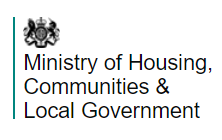
The Ministry of Housing, Communities and Local Government's latest land use statistics have drawn criticism from the Campaign to Protect Rural England despite some promising signs including the number of new residential addresses created within the green belt falling from 4% in 2016/17 to 2% in 2017/18.
According to the statistics, 53% of new residential addresses were created on previously developed land - a 3% annual fall. Of the new residential addresses created, 17% were on agricultural land, 15% of the new addresses were on land that had not previously been developed, and 13% fell into the "other developed use" category. On a side note, the percentage of new addresses created within areas of high flood risk has fallen from 11% to 9%.
However, the brownfield figures are of most concern to the CPRE. It notes that the proportion of brownfield development has fallen to its lowest level in five years, and that the amount of brownfield land redeveloped for housing has dropped from 2,628ha in 2017, to 1,758ha in 2018. It notes that the proportion of homes built on derelict and vacant sites has fallen 10% since 2014 and laments the loss of 3,689ha of countryside to housing in the past year.
"There is space on derelict land for more than 1m new homes and, with new sites coming forward all of the time, this renewable resource could continue to provide a steady pipeline of new housing going forward," says Rebecca Pullinger, planning campaigner at CPRE.
"It is imperative, if its potential is to be fully realised, that the Government, councils, and house builders all take a brownfield-first approach to development. By ensuring that run-down areas, which are crying out for regeneration, are prioritised we can build more of the homes so desperately needed in areas where people want to live, while simultaneously preventing the needless loss of countryside to new housing."
Joseph Daniels, founder of modular developer Project Etopia, has welcomed the halving of the new homes in the green belt, but is disappointed that more use isn’t being made of brownfields.
"Pressure on the green belt has never been higher, so the country’s use of previously developed land should only be going one way," he says. "Part of the problem is that previously developed land is often disliked by developers because it is smaller and difficult to access. Economies of scale then make it less profitable to develop but this is where modular and modern construction methods are capable of making these sites viable again.
"Future generations desperately need more housing, and there is still plenty of scope for developed land is being used for this purpose."
